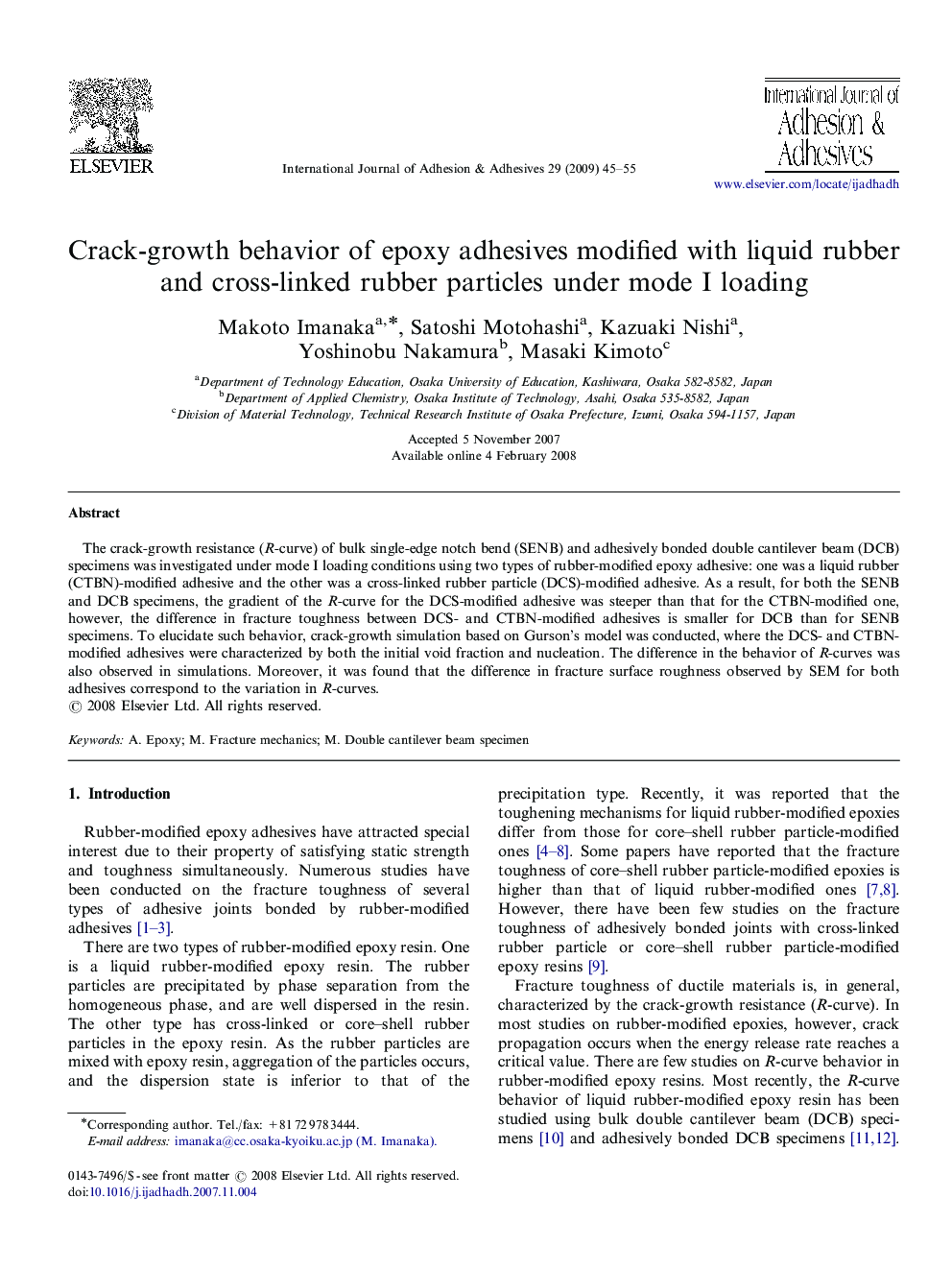| Article ID | Journal | Published Year | Pages | File Type |
|---|---|---|---|---|
| 777468 | International Journal of Adhesion and Adhesives | 2009 | 11 Pages |
The crack-growth resistance (R-curve) of bulk single-edge notch bend (SENB) and adhesively bonded double cantilever beam (DCB) specimens was investigated under mode I loading conditions using two types of rubber-modified epoxy adhesive: one was a liquid rubber (CTBN)-modified adhesive and the other was a cross-linked rubber particle (DCS)-modified adhesive. As a result, for both the SENB and DCB specimens, the gradient of the R-curve for the DCS-modified adhesive was steeper than that for the CTBN-modified one, however, the difference in fracture toughness between DCS- and CTBN-modified adhesives is smaller for DCB than for SENB specimens. To elucidate such behavior, crack-growth simulation based on Gurson's model was conducted, where the DCS- and CTBN-modified adhesives were characterized by both the initial void fraction and nucleation. The difference in the behavior of R-curves was also observed in simulations. Moreover, it was found that the difference in fracture surface roughness observed by SEM for both adhesives correspond to the variation in R-curves.
